Small engines can do big things . . . in not-little cars.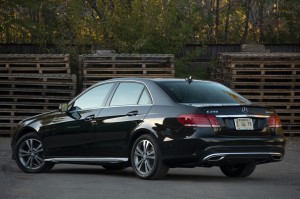
If they’re turbo-diesels.
And if the car is a new Mercedes E-Class sedan.
The 2014 E250 sedan, to be precise.
It’s a 4,200 pound luxury sled propelled by a teensy (2.1 liter) turbo-diesel four. The only such – and smallest such – engine in this class. It makes Brobdingnagian power: 369 ft.-lbs. of torque – more than many V-8s twice its size – and delivers untouchable fuel efficiency (EPA says 45 on the highway and you can do better than that if you drive it right).
Ach, but there must be a catch. Is it slow? Nein. Zero to 60 in just under 8 seconds. Run it up to 80 – and the engine will be barely running.
1,900 RPM on the tach at that speed.
Ok, but does it smell? Belch smoke? Nichts! You’d be hard-pressed to tell it’s a diesel by sound – or smell.
Nope again. The E250 costs thousands less than its rivals.
All right. Give up? There’s this one thing:
You can’t have it as a wagon.
Not yet, at least. For the moment, Mercedes only sells the new diesel four with the four-door version of the E-Class. The wagon version of the E (as of mid-June, 2014) is only available with the gas-burning V-6 or V-8.
Otherwise… this one’s pretty much out of the park.
WHAT IT IS
The E250 is the diesel-powered version of the 2014 Mercedes E-Class sedan. It’s available in both RWD and 4-Matic all-wheel-drive versions, with prices beginning at $51,400 for the latter and $53,900 for the former.
Rivals include e the diesel-powered version of BMW’s 5-Series sedan, which has a six-cylinder diesel and delivers 38 MPG highway – a distant second place vis-à-vis the fuel-sippy Benz. The BMW’s base price – $56,600 – is also $5,200 higher than Mercedes asks for the E.
Another possible cross-shop – the Audi A6 TDI – is even pricier: $58,395 to start. It does come standard with all-wheel-drive (it’s optional with the Benz and the BMW). But like the BMW, the Audi maxxes out at 38 on the highway, not even close to the Benz’s almost-hybrid number.
The big news – the main topic of this review – is the replacement of last year’s 3 liter V-6 diesel with a new four-cylinder diesel. All versions of the E-Class get an updated (swoopier, CLA-like) front clip, too.
WHAT’S GOOD
Startlingly excellent fuel efficiency.
Lots of glass area, upright seating and and low door tops give the interior a pleasantly retro big car vibe inside.
Excellent visibility outside.
Fine craftsmanship, tasteful combination of materials and colors. Real metal trim; wood that does not look faux.
A classy car.
Shivs the BMW 535d and Audi A6 TDI on price – and value.
WHAT’S NOT SO GOOD
Vibrating steering wheel for the Lane Departure Warning System is gimmicky and can be annoying due to frequent “false alarms” (details below).
Though it’s not slow, the BMW 535d and Audi A6 TDI easily outrun the E250.
A bit less backseat legroom than rivals.
There’s no such thing as a free lunch – but this is pretty close.
The new 2.1 liter turbo-diesel four makes 195 hp and 369 ft.-lbs. of torque – vs. 210 hp and 400 ft.-lbs, of torque for the previous 3.0 liter turbo-diesel V-6. That’s a pretty small difference – especially relative to the huge difference in these two engines’ EPA stats: 28 city and 45 highway for the four – vs. 21 city, 32 highway for the six.
Put another way, the 2014 E250 can travel 949.5 miles on the highway – vs. 675 for the 2013 E350, a difference of 274 miles. There are gas burners out there that can barely make it that far on a full tank.
And the ’14 E250’s city range on a full tank – 590 miles – is almost as good as the ’13 E350’s highway range.
And that’s with the same seven-speed automatic transmission used behind last year’s diesel V-6.
Probably, the new turbo-diesel four could do even better if it were paired up with an eight speed automatic (which the BMW and Audi TDI both have).
Regardless, you can drive for a long while – city or highway – before fill-up time in an E250.
A whole lot longer than you could in a BMW 335d (max range, 703 miles on the highway) or an Audi A6 TDI (about 722 miles, highway).
The one catch – if it is one – is that the Benz doesn’t get up to speed quite as quickly as the Audi or the BMW. The former scoots to 60 in 5.5 seconds; the latter in 5.8 seconds.
The E250 takes about 7.8-7.9 seconds (RWD-AWD).
These numbers, by the way, are almost identical to the numbers posted by last year’s much thirstier E350 Bluetec.
As in pretty much every other new high-end car, the Benz features Auto Stop to save fuel that would otherwise be spent doing nothing while the car is stationary, as when waiting at a red light. When the light goes green and the driver takes his foot off the brake, the engine kicks back on automatically. The system can be defeated (left off) by keeping the transmission in Sport mode; in the default E – for Economy – mode, the system is always on.
Superlatives all around.
In part, because because you can see all around. This Benz is among the few new cars I’ve test driven recently that doesn’t make you feel like you’re driving the Batmobile – hunkered down and relying on LCD displays to show you the outside world.
It has pleasantly slim-line A pillars (the supports to the left and right of the windshield) and a fairly upright and tall windshield. The door glass begins lower down than is typical and it’s taller as a result. More glass area equals more visibility, which equals less guesswork about your environment.
Though it will corner – flatly and without TCS contretemps – this car is all about poise.
Everything about it is easy to use.
From the smartly positioned (because it’s out of the way of spilled drinks and right where the driver can see it) column-mounted gear selector to the non-fussy interfaces for the various systems, infotainment and otherwise. Standouts include the large up and down paddles to increase or decrease the temperature and fan speed settings. Much more ergonomic than pushing buttons in and out. Even the COMAND system for the GPS and audio is relaxingly straightforward. The stereo, for instance, has a pleasingly retro reinterpretation of the sliding scale display that analog radios had Back in the Day. It not only looks cool, it’s inherently functional – because you can see more than just the station you happen to be on at any given moment. The logic/usability of the old school design – with modern LCD visuals.
Pleasant – and easy – also manifests in how the car drives.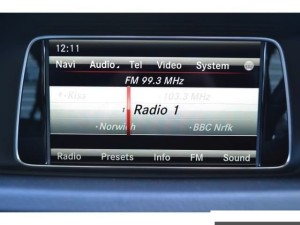
The new 2.1 turbo-diesel four is everything the previous 3 liter turbo-diesel V-6 was, just epically more economical to operate.
While the E250 isn’t as quick as the BMW 535d or the Audi A6 TDI, a sub-eight-second 0-60 run is not slow. And having 369 ft.-lbs. of torque at your service immediately (1,600 RPM) means it’s hardly ever necessary to exert more than light pressure on the go pedal to get the car to go. The torque output of this little engine is nothing short of phenomenal. It is comparable to V-8 gas engine torque – without the V-8 gas engine’s bottomless thirst.
Another enjoyable aspect of driving an oil burner is the extremely low cruise RPM. Once up to speed and in top gear, the RPMs settle down to a fast idle (around 1,600 RPM) even at 70-something MPH. At 80, you’re not quite running 2,000. This is one of the reasons why diesels do so well on the highway, by the way. They work less hard than gas-burners to maintain steady-state/highway speeds.
Often, they do better than hybrids.
First, form.
As mentioned earlier, the E’s profile (and expansive glass area) endow the car with much better than average visibility. The profile is formal, but not overly so. You don’t feel (or look like) a stiff driving it. Mercedes has nicely balanced the Yin of affluence and exclusivity with the Yang of I’m-not-trying-to-make-a-big-deal-about-it.
The more dinner-jacket attire of the Benz is also an aesthetic counterpoint to the understated Audi . . . and the more openly aggressive BMW.
The E is a bit smaller than its two main rivals – inside and out. At 192.1 inches overall, it’s about two inches stubbier than the A6 (193.9 inches long overall) and 1.3 inches less long than the BMW 5 (193.4 inches).
It’s a small-seeming difference, but manifests in significant ways inside the car. The E’s backseats have 35.8 inches of legroom vs. 37.4 in the A6 (the BMW’s backseats are virtually as tight as the Benz’s, just 35.8 inches of legroom). Front seat legroom in all three cars is about the same: 41.3 in the Mercedes, 41.4 in the BMW and 41.3 in the Audi.
One area where the Benz comes up short – literally – is headroom. 37.9 inches in the front row vs. 40.5 in the BMW (the Audi’s worse than both – 37.2 inches). However, the Mercedes’ formal roofline doesn’t exact a major price on the backseat occupants – as it does in the BMW. The E’s second row head space stands at 38.2 inches – slightly more than in the front seat – whereas in the BMW, second row headroom plummets to 38.3 inches (a difference, front to rear, of 2.2 inches).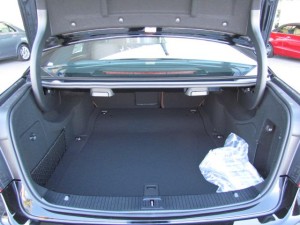
The Benz also has the roomiest trunk of the three: 15.9 cubic feet vs. 14 for the BMW 5 and 14.1 for the Audi A6.
It (the Mercedes) is arguably the more balanced car. It imposes fewer compromises – whether the measure is overall room in both rows (and in the trunk) or economy vis-a-vis-performance.
THE REST
Mercedes, like all the high-end (and many middle-tier) brands, offers a number of what I call Addled Driver Countermeasures, including “collision mitigation” – which means the car is paying attention even if you’re not and will hit the brakes for you if you don’t when a situation arises, such as traffic up ahead having stopped and you don’t seem to have noticed. But – to Mercedes’ credit – the E’s system is less prone to false positives – such as a car up ahead preparing to turn off. In such a scenario, your eyes (and mind) know the vehicle ahead is turning rather than stopped in the middle of the road; that it will be long gone by the time you get to where he is – so there’s no need to jam on the brakes. But in some cars – though not the E – the electronic eye does not know this and the computer brain will hit the panic button regardless. Angry lights erupt from the dash, often accompanied by obnoxious warning buzzers.
This did not happen to me even once during the week I had the E.
On the other hand, the Lane Departure Warning system is prone to false positives – as when passing another car in a legal passing zone. It hits you (literally) with a THUMP THUMP THUMP pulse through the steering wheel’s rim. The system uses an electronic eye to scan the painted lines on the road and the warning is triggered whenever the car strays over a painted line, the theory being this will reduce inadvertent collisions with cars in the opposing lane of traffic. But in practice, the system, also “warns” you when you’re just trying to pass another car, or changing lanes – because such actions involve treading over painted lines, which makes the car upset.
There is also a Steering Assist system that – in theory – helps keep the car in its lane; in particular, if the right wheel drops off pavement onto the shoulder. Instead of the driver possibly over-correcting and losing control (a fairly common occurrence, especially among new/inexperienced drivers) the car cuts throttle, brakes individual wheels and even steers a little to try to prevent loss of control. It worked for me some of the time, but not all the time. If there’s no white line on the right side of the road, the system doesn’t register that you’ve wandered onto the shoulder – and nothing happens unless you take corrective action.
Which is probably how it ought to be, regardless.
Until these “safety” technologies are infallible – or close to it – I think it’s arguably dangerous to lull drivers into complacent dependence on them.
Better for everyone for drivers to pay attention to driving.
The E’s back-up camera provides a split screen/surround and frontal view – from the perspective of someone at skateboard level – as you drive, until the car reaches about 10-15 MPH. It’s cool, but (again) don’t let it distract you. The rearview camera – de facto standard in cars in this class (and now a legal requirement for all cars, irrespective of class) is a nice accessory but hardly necessary in this car because of the E’s excellent visibility/sight lines. If you back up over someone – or into something – don’t blame the car.
Blame you.
The E250’s ensemble of standard equipment (and available options) devolves two ways: Luxury and Sport. With the former, you get a traditional-looking upright Mercedes hood ornament; with the latter, the three-pointed star is integrated into the front fascia. A softer-riding 17-inch wheel/tire package comes with the Luxury – while Sports get a more cornering minded 18-inch set of shoes, as well as firmer suspension calibrations.
I have two main gripes to register:
First, that Mercedes – so far – is only offering the brilliant 2.1 liter turbo-diesel in the E sedan. Not the E wagon.
This makes as much sense to me as sending a vegan a box of beef jerky. Wagons are practical. A diesel engine is . . . . well, you see my point.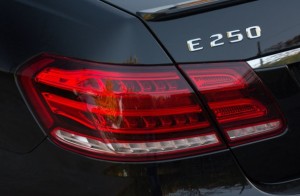
If you want the wagon, you’re stuck with 19 city/26 highway – best case. In case you’re counting, that’s about 20 MPG less on the highway than the E250 sedan.
Last one – a two-part gripe – and neither of them Mercedes’ fault. The cost of diesel fuel – currently about 30 cents more gallon than premium unleaded (most high-end cars require premium fuel) puts a sizable dent in the economic argument for a diesel vs. a gasoline engine. Blame Uncle – who has made it more expensive to refine diesel fuel, which used to cost less than gas. However, the fact remains that you’ll need to fill up the E a lot less often – which saves time and hassle, especially on road trips. I could, for instance, drive the E250 all the way up to DC and back to my place in The Woods – a round trip of about 450 miles – and still have half a tank of fuel left.
Like almost all diesel passenger cars currently on sale, the E uses urea injection to placate Uncle’s emissions ukase. The urea is sprayed into the exhaust stream to catalytically (chemically) convert some of the exhaust gasses from one thing to another. Occasionally, the urea tank must be refilled – which is a hassle, though a small one. Unless you forget to do it – or ignore the dashboard warnings admonishing you to get it done. If you let it run bone dry of urea, the car’s computer will first gimp the engine (progressively lower speed operation) and will ultimately prevent the engine from begin re-started at all – at which point you must get the car to a MB dealer for therapy.
Just so you know.
THE BOTTOM LINE
It’s no small thing that this large luxury car gets better mileage than every single current compact-sized economy car.
Now, if only the makers of compact economy cars would offer engines like this in their cars.
Throw it in the Woods?
Spread this via Twitter: LibertarianCarG (they would not let me have “guy”).
PS: We depend on you to keep the wheels turning. If you value alternatives to the MSM, please support independent media. Our donate button is here.
For those not Pay Pal-inclined, you can mail us at the following:
EPautos
721 Hummingbird Lane SE
Copper Hill, VA 24079




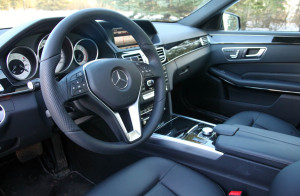



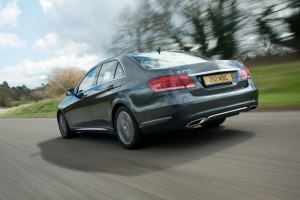
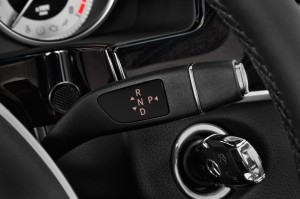
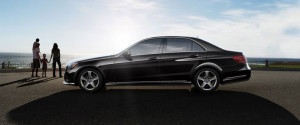
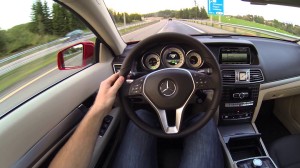
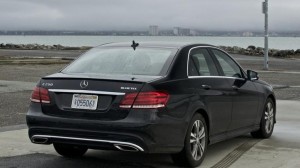






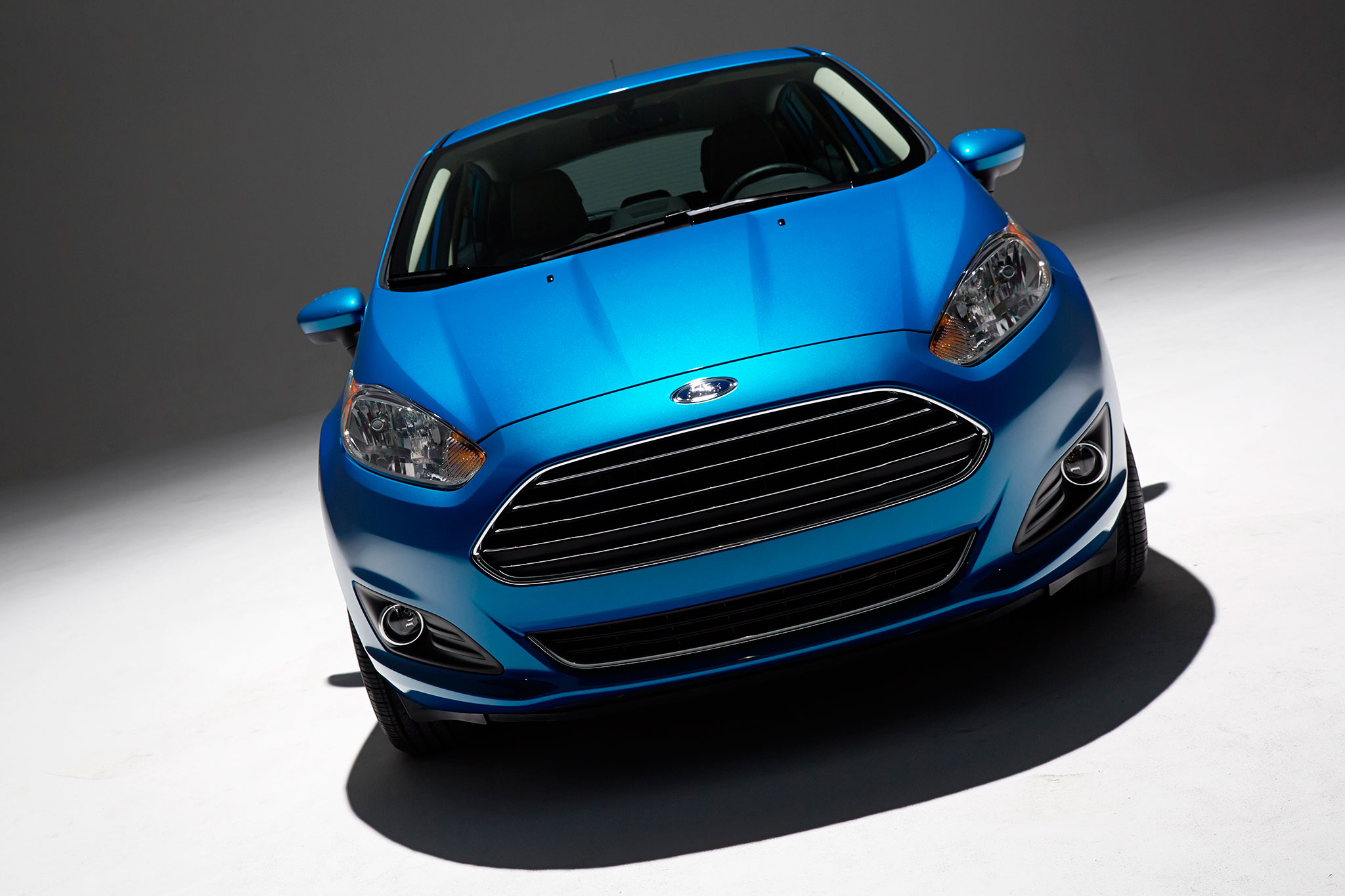
We love our 2014 Mercedes Benz GLK 250 Diesel Bluetec SUV! Since we got it (about two 1/2 years ago) we have put about 25,000 kilometers on it, enjoying the power and sure footed behavior. Best on a long trip was 5.1 liters to 100km ! In town driving amounts to 7.5 liters to 100km. It does not smell ever of diesel fuel. It is much quieter on the road than our friend’s 2015 Toyota V6 Van. We have it serviced once a year at a Mercedes Benz dealership which carefully goes over the whole SUV from end to end and top to bottom.
We have friends who owned and still own VW TDI diesel vehicles that have been extremely reliable, safe and great on fuel, better than anything else on the road. Too bad VW decided to no longer sell diesels in the USA. There have been no complaints from other countries and no billion dollar lawsuits.
There is in my opinion a mystery element in the whole socalled intentional emissions cheating affair that has not been explained yet.
the E250 would suit me fine,but at 51000?Fuel efficiency at fifty grand,no way.
VW TD at 21,000 makes a lot more sense
Hi Joe,
Apples and oranges.
The E is a luxury-sport car. The VW is a very nice car.
In a car such as the E, the diesel is not so much about saving money as it is about saving hassle. It’s nice to not have to refuel as often, to be able to drive a long while on a full tank… and not be driving an economy car.
Slow but much safer….not like some with road rage……All Brains here with a 3rd eye and 6 senses to guide me along….Its all about key Elements baby..!!!!
Eric_G – I drove the same engine in the GLK250 and didn’t experience any lag — the motor has twin sequential turbos, where one is smaller than the other and thus spins up faster. It’s the perfect city motor – you just go where you point it. The 369 ft-lbs of torque and 4Matic ensure you can take the lane ahead of the other guy.
With regards to the AdBlue (urea) – the opening on the tank requires a special nozzle that’s on the Mercedes refills. The system is convenient – you twist it on, and if you don’t use it all, when you remove it you don’t get the excess dumped all over. But they’re expensive. So what you do it buy one of them from the parts counter, and refill the tank on the car (draining the bottle). You then cut the bottom of the bottle off and use it as a funnel with the urea available at truck stops and in 5-gallon jugs at Walmart — which are much cheaper, and are the same standard formulation.
Good stuff, Chip – hat tip on the urea tip!
You mean you really need to put piss in the fuel tank of these cars? Maybe they can just build a toilet into the driver’s seat, think of the convenience!
http://www.techeblog.com/index.php/tech-gadget/car-seat-with-built-in-toilet-might-be-strangest-invention-ever
There’s a separate fill-hole for the piss!
Mom has an elderly friend, who used one one of the porta-potties at a golf tournament one time. She came back from her trip and told mom “I’m glad they have those purse shelves in there — the floor is too dirty to put my purse down”. Turns out she had put it on the plastic urinal..
Or buy a VW Jetta or Golf TDI…no piss bottle required.
😉
There’s that…
I wish Benz, et al, would figure out how to get their diesels past Uncle without the urea nonsense….
One thing that you don’t stress enough on the turbo diesels is that the turbocharger WILL die at some point, long before the rest of the engine is ready for the scrap yard. It’s not a hard repair, but it is a very expensive part. The turbo is subject to hot engine exhaust gasses, spins at extremely high RPMs and (at leat with VW/Audi), has computer controled vanes that direct the airflow and reduce turbo lag (oh, and you don’t usually mention turbo lag either, something else that you have to get used to when driving TDs).
If you buy a TD, understand that the turbo is considered a replacable part in the big picutre, since the diesel engine will have no problem lasting 250,000 miles or more.
Not knocking you, just picking nits.
Hi Eric,
Echoing Chip, there’s no lag with this engine. It responds immediately and very forcefully. I would tell you (and everyone else, in my articles) if that were not the case, if there was an issue with turbo lag. I let a friend of mine drive it around the block because he had doubts. Suffice to say, he doesn’t anymore!
On the turbo/durability issue: I agree it’s possible. However, historically, MB turbo-diesels have an excellent track record for long service with very little in the way of major repairs needed.
Time will tell, but if I were in the market for a car in this price range, the turbo longevity issue would not concern my much.
That’s good to know. The VW/Audi (VAG) diesels do have a little lag, but much less than the old Chrysler 2.5 Turbos of the 1980s. I just notice a little difference, mostly when I switch off from my work truck, a rarely loaded F-150 with a V8 and towing package. I didn’t know it had dual turbos, that’s your answer as to why no lag. The VAG turbo has variable fins to control boost. Usually the computer gets it right, but sometimes, not so much. It’s more like getting an automatic to downshift when passing than outright loss of power, but it’s still there and annoying (for a $35K car).
Sad thing is that the slowpokes crawling at 60 in the fast lane are often driving V8 powered luxury sedans or SUVs, using maybe 1/4th of the vehicle’s capability.
Roger that, Escher –
I encounter it almost every day.
It’d be less annoying, I think, if these people were driving circa 1982 K Cars that had trouble going faster. But there is something particularly infuriating (perhaps because it’s so teeth-achingly stupid) about a Clover “doing the speed limit” – or less – in their 300-plus hp vehicle.
For me, I would chose the Audi over the Merc (or BMW) because I think the quality of materials and workmanship is better – at least compared to the one BMW and one Mercedes I have had in the past.
As far as power is concerned, why would anyone in the States need any more? The last time I was there, people drove at walking speeds, half-asleep and in any lane they wished. Two-lane roads have either too much traffic or no-passing zones tuned for the lowest common denominator of driving skills.
Anyone who feels his ego could be tarnished by driving one of these lesser Mercedes can always remove the badges with a little dental-floss and turpentine.
Hi Doug,
The “power/performance” thing is a codpiece – for most U.S. drivers. Something for show – or to talk about. But rarely to use.
To be fair, most people can’t even if they wanted to.
There’s too much traffic in many areas, for one.
Or too many cops.
And the sanctions one faces for “speeding” are increasingly severe. Get just a couple such tickets and your insurance – which you’re forced to buy – skyrockets. The cost of the tickets themselves is not small, either.
As a practical matter, a car capable of comfortable getting to 60 in 8 seconds or less and which can cruise at 75 or so without straining is not only adequate power/performance for American driving conditions, it’s as much power/performance as can realistically be used on a regular basis. I wonder how many American drivers have ever driven a car faster than 130 mph… and that’s something a V-6 Camry can do. I doubt 1 out of 1,000 has driven faster than 100 (and most of those who have done so have only done it for a few furtive moments).
Right?
A V-8 E-Class (or even the V-6 E-Class) is not unlike owning a .50 cal Browning. Nice to have, sure. But what can you really do with it?
“From each according to his abilities. To each according to his needs.”
When we take it upon ourselves to declare what other people “need” and what they “don’t need,” we have begun to descend a very slippery slope.
When a luxury car maker decides to give buyers “no more than they need,” in any automotive parameter, they have discovered the best possible way to lose market share.
Hi Mike,
I’d never presume to dictate “need” to anyone (or have it dictated to me). I was just pointing out that there is a disconnect between the capability of most cars and people’s willingness (or ability) to make use of those capabilities.
By way of analogy: If someone wants to buy an astronaut pressure suit and walk around it, that’s certainly their right.
I used to favor BMWs, but they’ve lost me in recent years because of over-tech . . . and over-priced.
This E is a damn nice car – nicer (more standard equipment) than the BMW 5 – for a lot less money. I mentioned in a review of the BMW 3 series diesel that it doesn’t come standard with satellite radio or heated seats. Ridiculous, given these features are now routinely standard equipment in cars priced under $25k.
And the E250’s 45 MPG is no small thing, either.
You’re right that most drivers rarely use even two-thirds of the car’s available performance. Still, if a buyer pays $51,000 plus for a car, he/she expects that an extra third is there, should they ever want or need it.
In one way, your DC analogy makes perfect sense. But I doubt that a new E-Class with “250” on its trunk will sufficiently stoke the egos of those power mad vampires. It is a fact that, in Newport Beach Ca, smaller Mercedes more than two years old are referred to as ” maid’s cars.” That same mind set probably would prevail in DC too.
Did you notice that you repeated one statement Three Times in this article? Namely, “it’s not ‘slow.'” Don’t know if you really convinced yourself, but you didn’t convince me.
Granted, “slow” is a relative term. I’ll concede this Mercedes is not slow in comparison to a VW Jetta Clean TDI. But the Jetta “starts” at $21,295….NOT $51,000plus.
As you did mention, the E250 sucks diesel fumes Big Time in a 0-60 sprint vs either of it’s real competitors, the BMW535d or the Audi A6TD.
So yes, for a Luxury Car in 2014, the E250 is slow….Unacceptably Slow.
Mercedes has always had a cheapskate segment, that delights in getting maximum MPG in a good sized luxury car. But that segment is small. I doubt that Mercedes will be able to sell enough of these puppies in America to take much CAFE pressure off the rest of their fleet.
You may well be right, Mike.
Still: It seems – based on how people I encounter out there drive – that maybe 1 out of 20 of them ever uses even two-thirds of the performance their cars are capable of. Light turns green, they all creep forward at about the same (slow) pace.
When you’re surrounded by such, how fast can you go, anyhow?
DC, for instance. An E63 AMG would be next to useless up there. But the E250 gives you the same car, the same luxury (when optioned out)… but without the pointlessly high gas bills, or the constant need to stop and refill the thing.
900 miles on a tank is pretty amazing.
Hmm,900 miles per tank.How large is the tank?My 86 Dodge e van held 36 gal!
But hauling all that fuel around when you don,t need it?
Hi Joe,
The E’s tank holds 21.2 gallons. This is about par for a large sedan, whether gas or diesel. In any case, the tremendous range of the Benz E250 is one of its draws. It’s nice to not have to fuel up as often; to be able to drive without stopping for 500-plus miles.